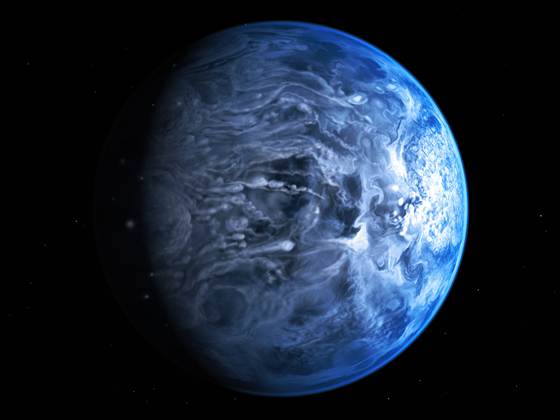For the first time, astronomers have detected the color of a planet beyond our solar system: It’s blue, but not because there’s water on its surface. It doesn’t even have a “surface.” Instead, the color is thought to come from glassy grains of silicate in its choking atmosphere.
The planet, known as HD 189733b, is a blazing hot gas giant circling a star 63 light-years from Earth in the northern constellation Vulpecula.
“This planet has been studied well in the past, both by ourselves and other teams,” Frédéric Pont of the University of Exeter, leader of the Hubble observing program, said in a news release. “But measuring its color is a real first — we can actually imagine what this planet would look like if we were able to look at it directly.”










